Report Parameter
12 Jul 20189 minutes to read
Report parameters filter report data that is retrieved from a data source. When you cannot filter data in data source, you can use parameters to filter report data after it is retrieved. You can also sort and group data in a report based on report parameters.
For example, by including parameters for a start and end date in a query, you can specify a date range that limits the data retrieved from the data source.
Add parameter
You can add new parameter using the following steps:
-
Click
Parametericon in the configuration panel to launch theParameterconfiguration.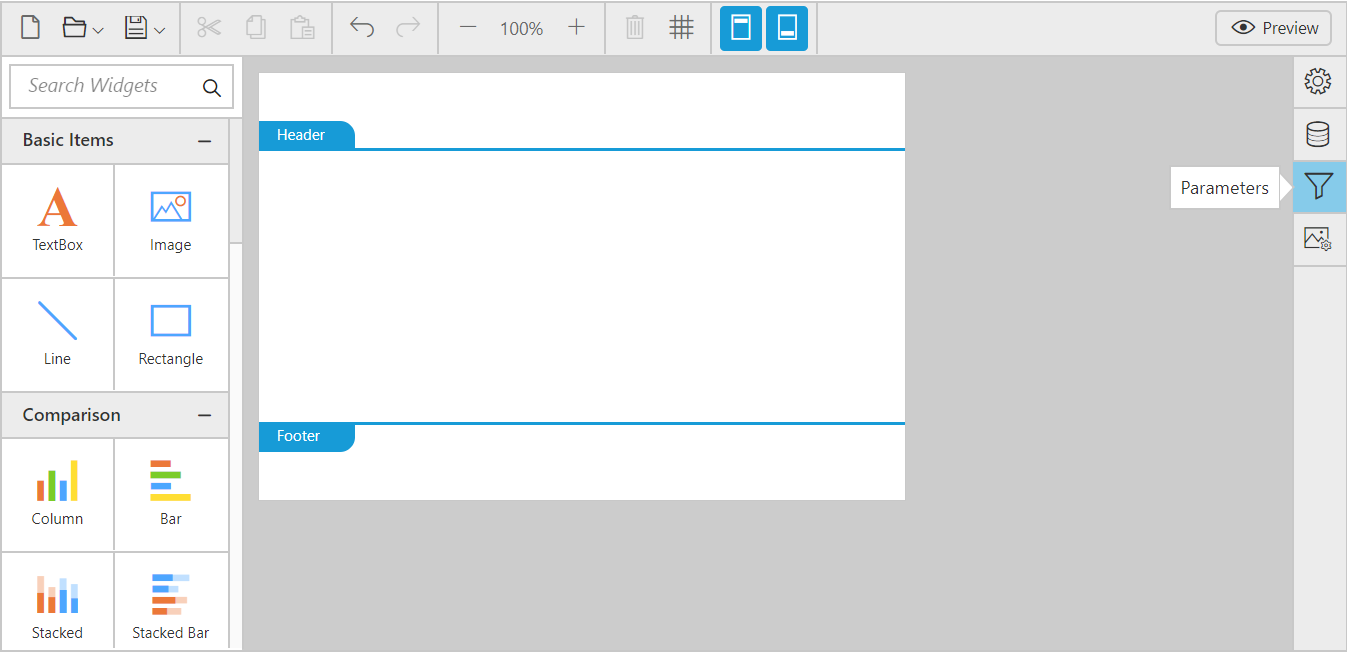
-
Next, click the
New Parameterbutton.
Now, the following wizard will be displayed.
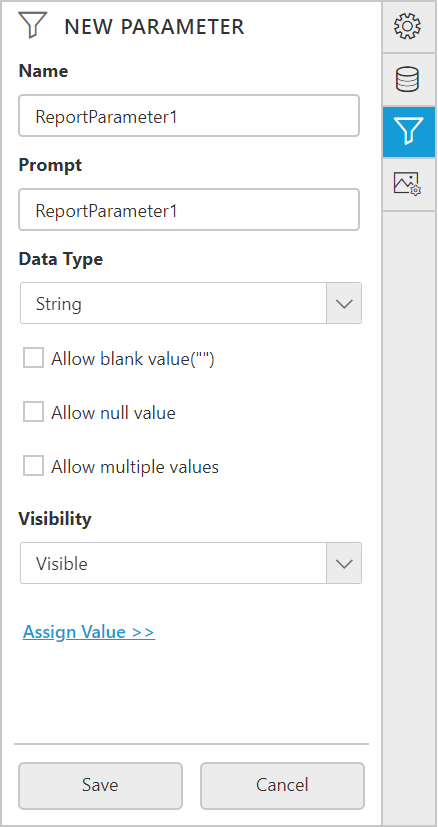
-
In Name, type the name of the parameter or use default name. By default, manually-created parameters name are similar to
ReportParameter1. -
In Prompt, type the text that appears next to the parameter when the user previews the report.
-
In Data type, select the data type for the parameter value. The supported data types are
Boolean,DateTime,Integer,FloatandText. -
Select Allow blank value, if parameter value needs to be set as an empty string or a blank value.
Note: If you specify valid values for a parameter, and you want a blank value to be one of the valid values, you must include it as one of the values that you specify. Selecting this option does not automatically include a blank value for available values.
-
Select Allow null value, if the value of the parameter needs to be set as null.
Note: If you specify valid values for a parameter, and you want null to be one of the valid values, you must include null as one of the values that you specify. Selecting this option does not automatically include the null value for available values.
-
Select Allow multiple values, if the value for the parameter should be multiple values. Null values are not allowed.
-
Set the visibility option.
-
Select Visible to display the report parameter at the top of the report while running the report. This option allows you to select parameter values at run time.
-
Select Hidden to hide the report parameter in the published report. The report parameter values can still be set on a report URL, in a subscription definition, or on the Report Server.
-
Select Internal to hide the report parameter. In the published report, the report parameter can only be viewed in the report definition.
-
-
Click
Assign Valueto set available and default values.
Now, the above action will launch Parameter dialog, where you can set the available and default values for the parameter.
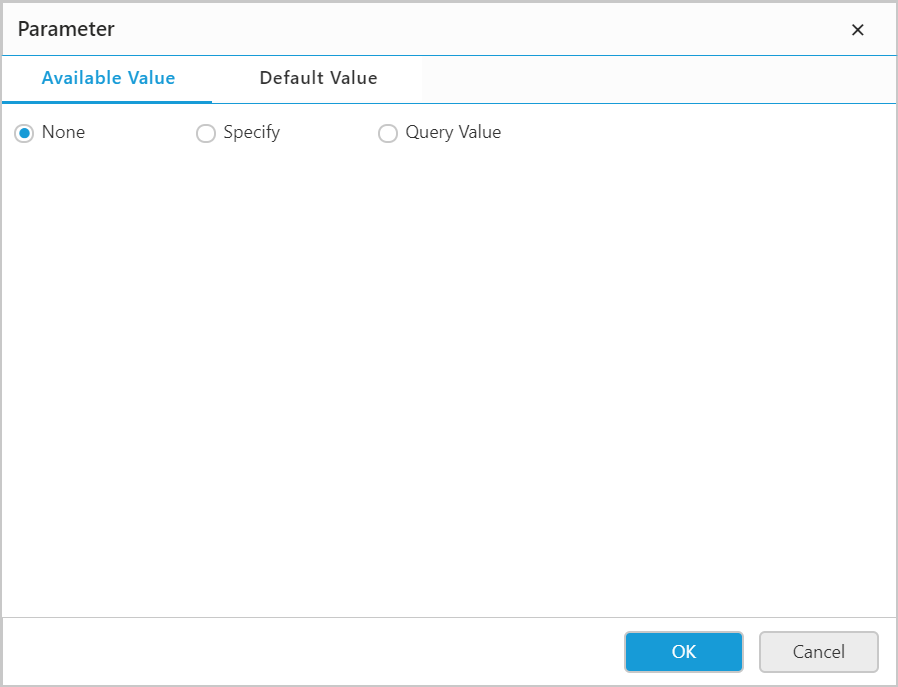
Add available values
An available values list limits the user to choose and preview only the data related to valid values for the parameter. You can see this drop-down list of available values for the parameter, while previewing the report.
You can choose the Available Value tab in parameter dialog to add available values.
-
Click Available Value tab with below options:
-
Click Specify value to enter a static list of parameter values from which the user can choose. If you select this option, a list in which you can type values and labels appears.
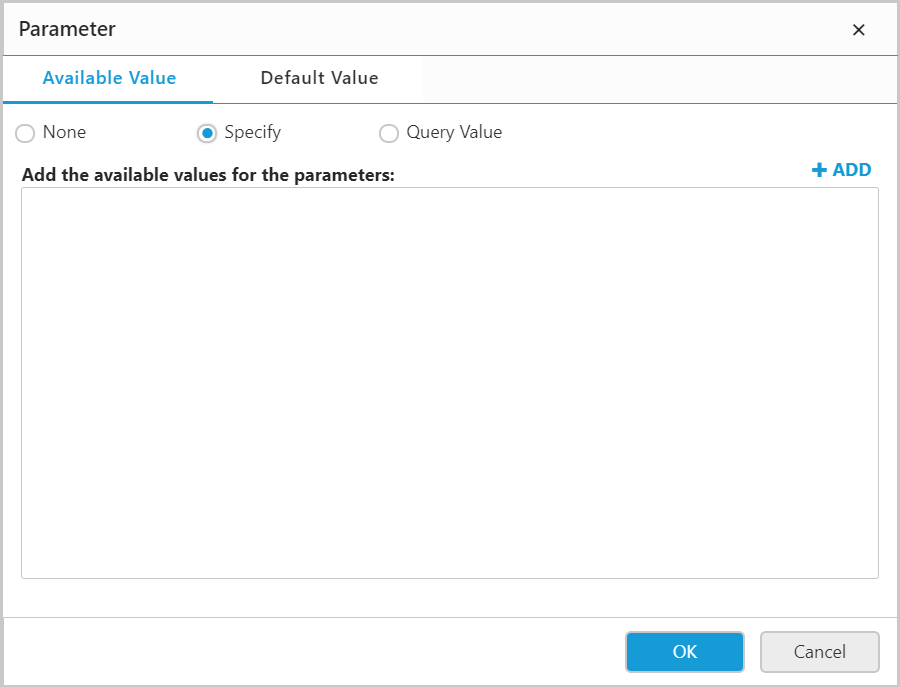
-
Click Add and then enter the value in the Value text box, and optionally, the label in the Label text box. If you do not provide the label, the value is used.
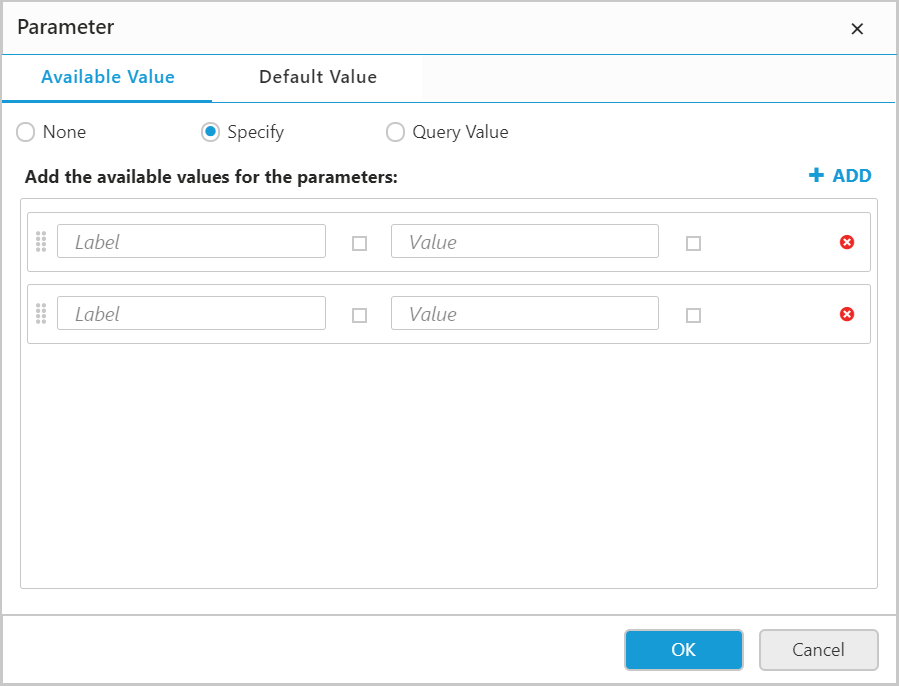
You can write an expression for the value by clicking the icon which is right after to Value textbox.
Repeat this step for as many values as you want to provide. The order of items you see in this list determines the order.
Reorder Item:
To change the order of an item in the list, click and hold the icon in the left corner of Label text box, and then drag the item to higher or lower position in the list.
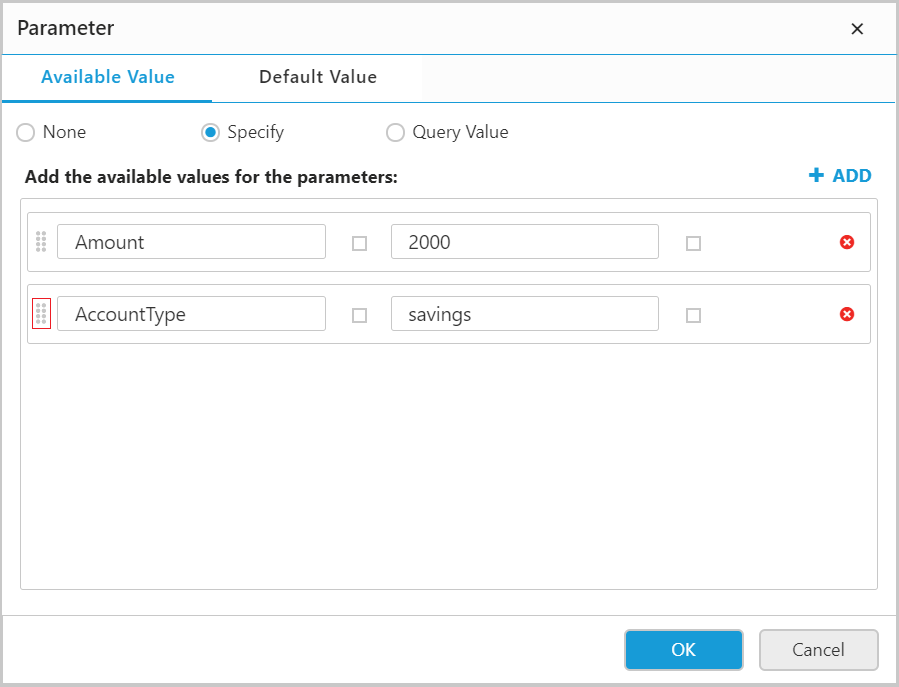
The position of dragged item is shown as below:
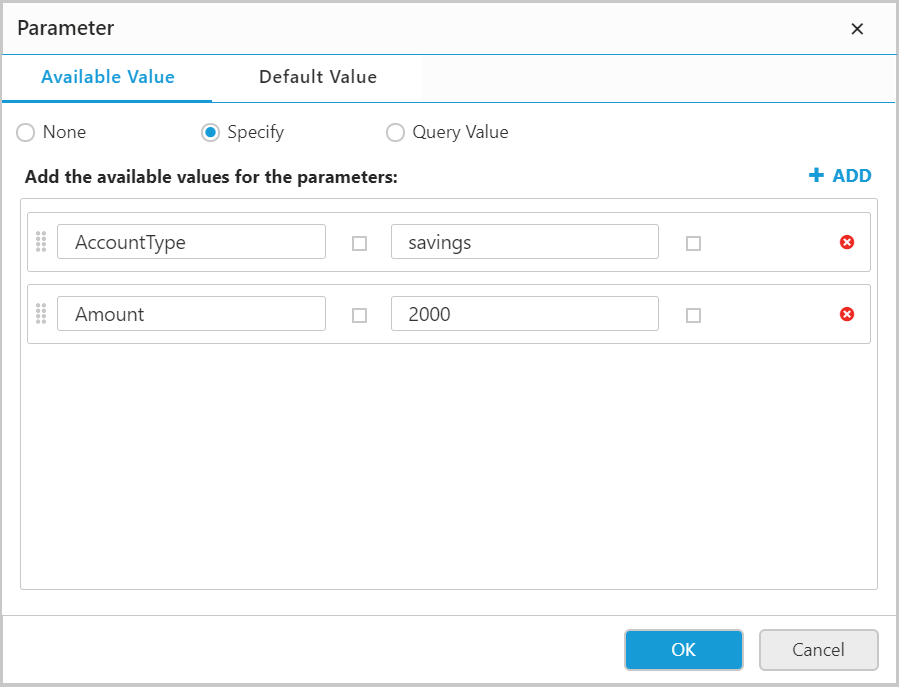
-
-
Click Query Value to provide the name of an existing dataset that retrieves the values for this parameter.
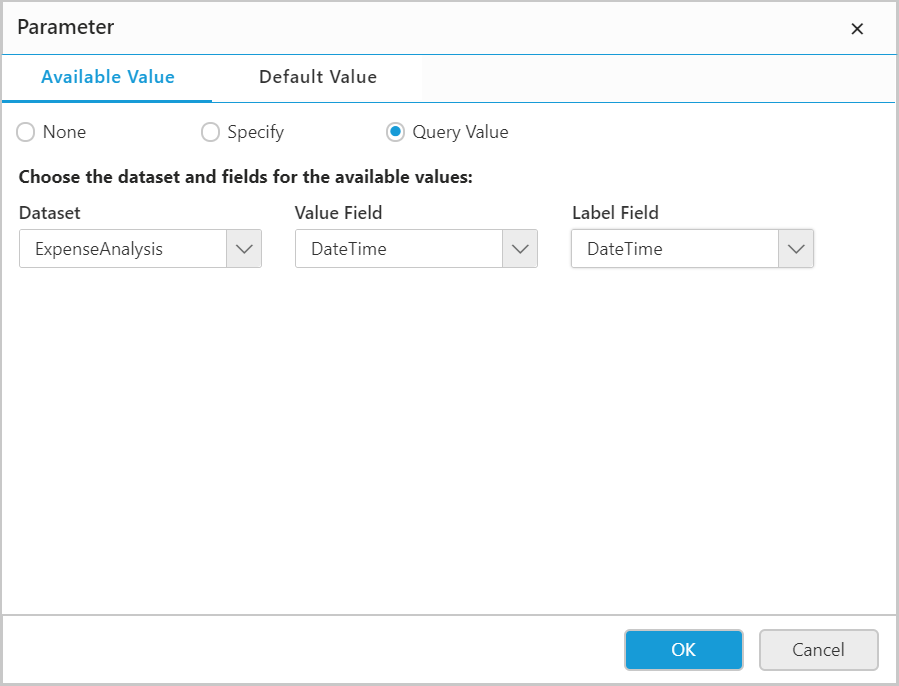
In Dataset, choose the name of the dataset. Datasets can be defined using the data view. For more information, refer Create Dataset.
In Value field, choose the name of the field that provides parameter values.
Note: These fields are retrieved from the list of column or field names in the dataset.
In Label field, choose the name of the field that provides the parameter names. If there is no separate field for names, choose the same field similar to Value field.
-
Click None to remove available values for parameter. When you preview the report, the drop-down list of available values for the parameter no longer appears.
-
-
Click
OK.
Note: If you have specified available values for a parameter, the valid values always appear as a drop-down list in preview.
Add default values
Parameters will have default values to automatically run report on first view without choosing any parameters to view it.
-
By default, the parameter dialog will be launched with
Available Valuetab. To switch over toDefault Valuetab, click the Default Value which has below options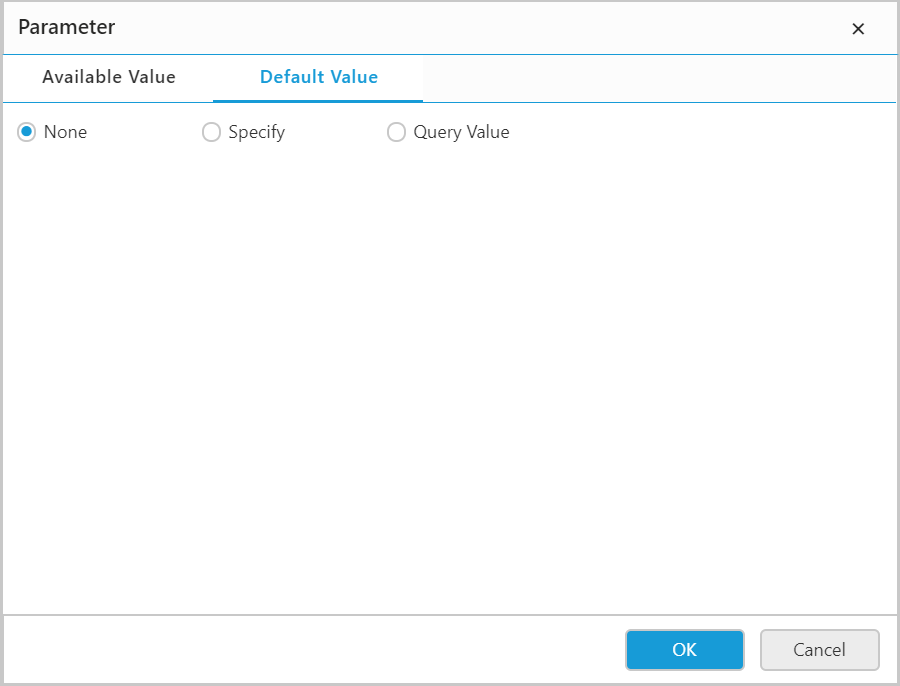
-
Click Specify value to provide a value or list of values.

-
Click Add and then enter the value in the Value text box.
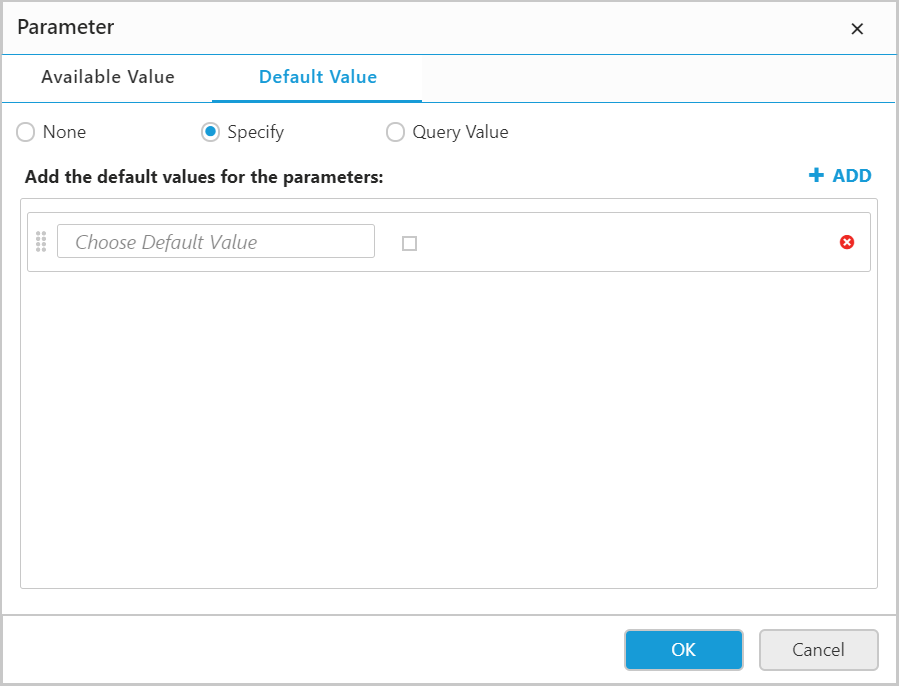
You can write an expression for the value by clicking the icon which is right after to Value textbox.
For multi value parameters, repeat this step for as many values as you want to provide. The order of items in the list determines the order.
-
-
Click Query Value to provide the name of an existing dataset that retrieves the values.
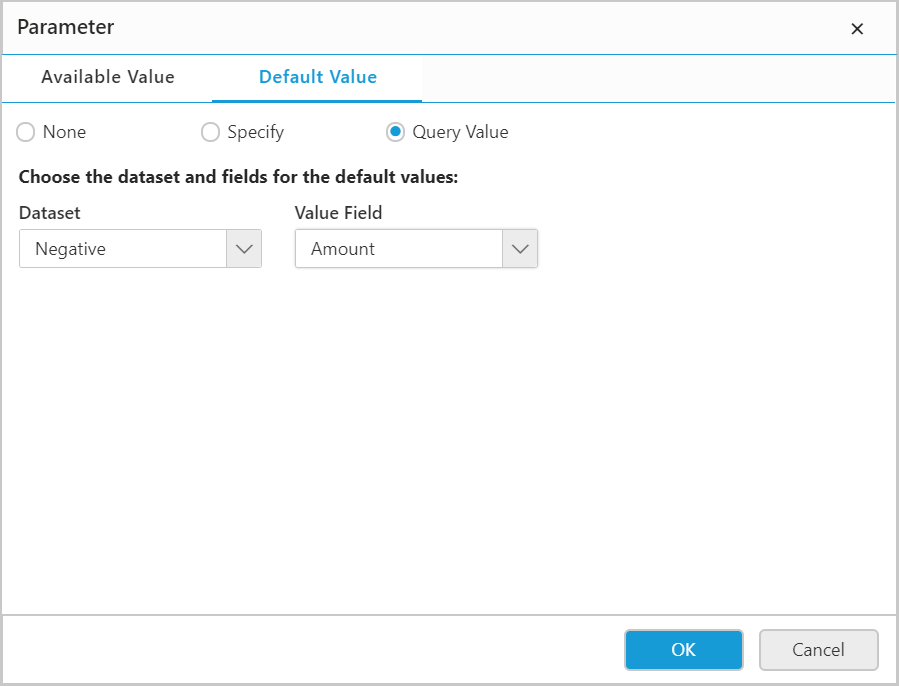
In Dataset, choose the name of the dataset. Datasets can be defined using the data view. For more information, refer Create Dataset.
In Value field, choose the name of the field that provides parameter values.
Note: These fields are retrieved from the list of column or field names in the dataset.
-
Click None to remove default values for parameter.
-
-
Click
OK.
Note: To add multi value parameters, you must check
Allow multiple valuesoption.
Save parameter
Click Save in the parameter wizard.

The parameter will be listed under Parameter panel in the report like below.

Now, the Parameter has been created successfully with the Web Report Designer.
To display the parameter in design area
You can prefer to display the parameters in a textbox placed anywhere in the design area for sharing the information of parameter chosen.
The parameter can be placed easily in design area using below steps:
-
From the parameter configuration panel, drag the parameter to the footer.
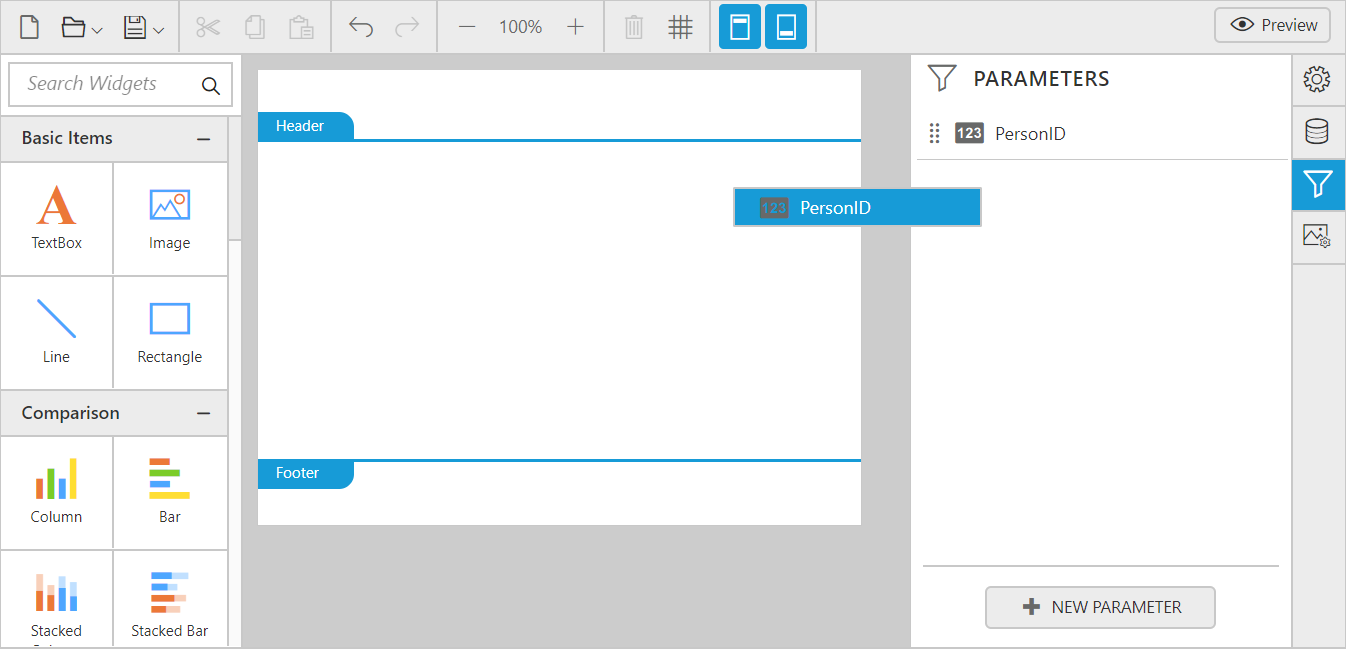
-
It displays a text box with
<<Expr>>. Select the<<Expr>>text and right-click the<<Expr>>to pop up context menu options.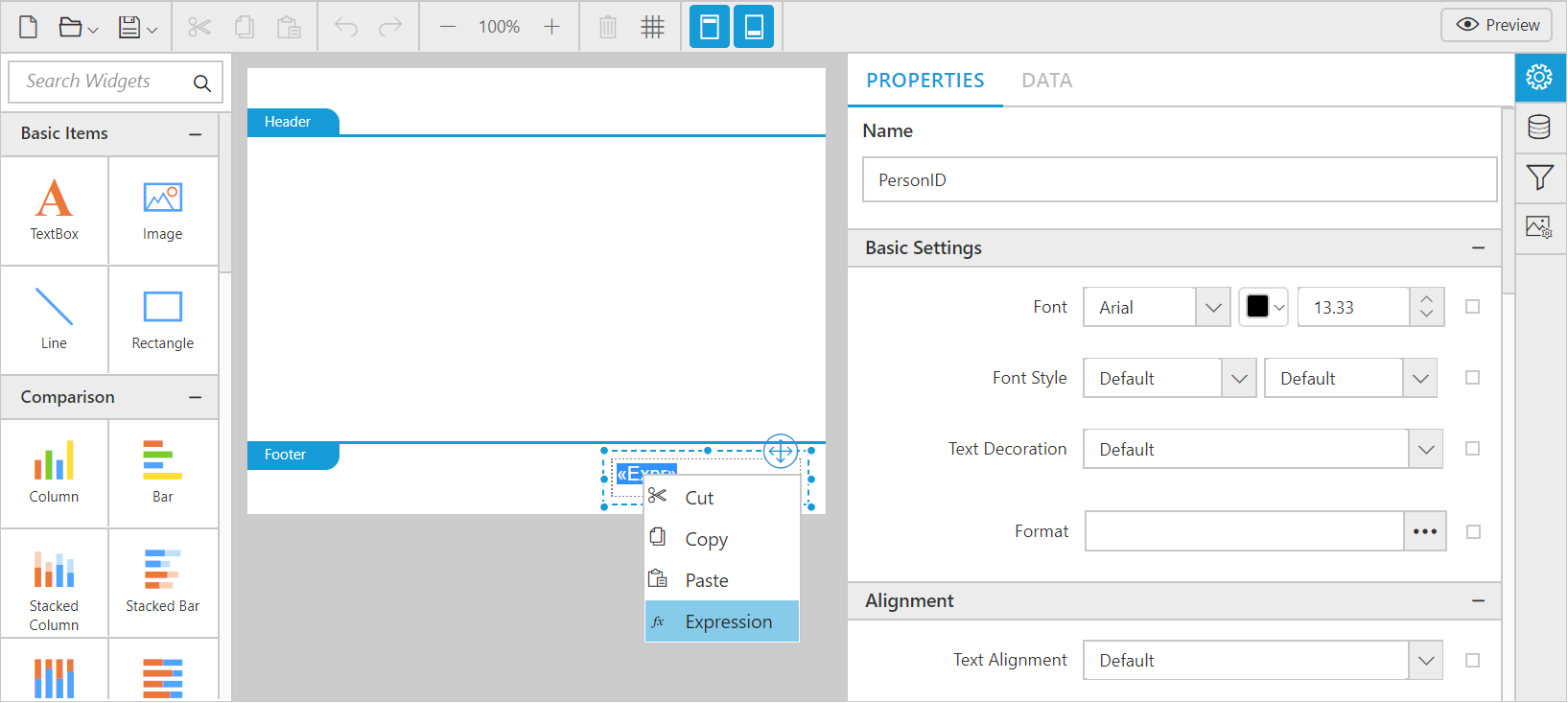
-
Click
Expression.The expression dialog box opens, you can edit the expression value in the text area.
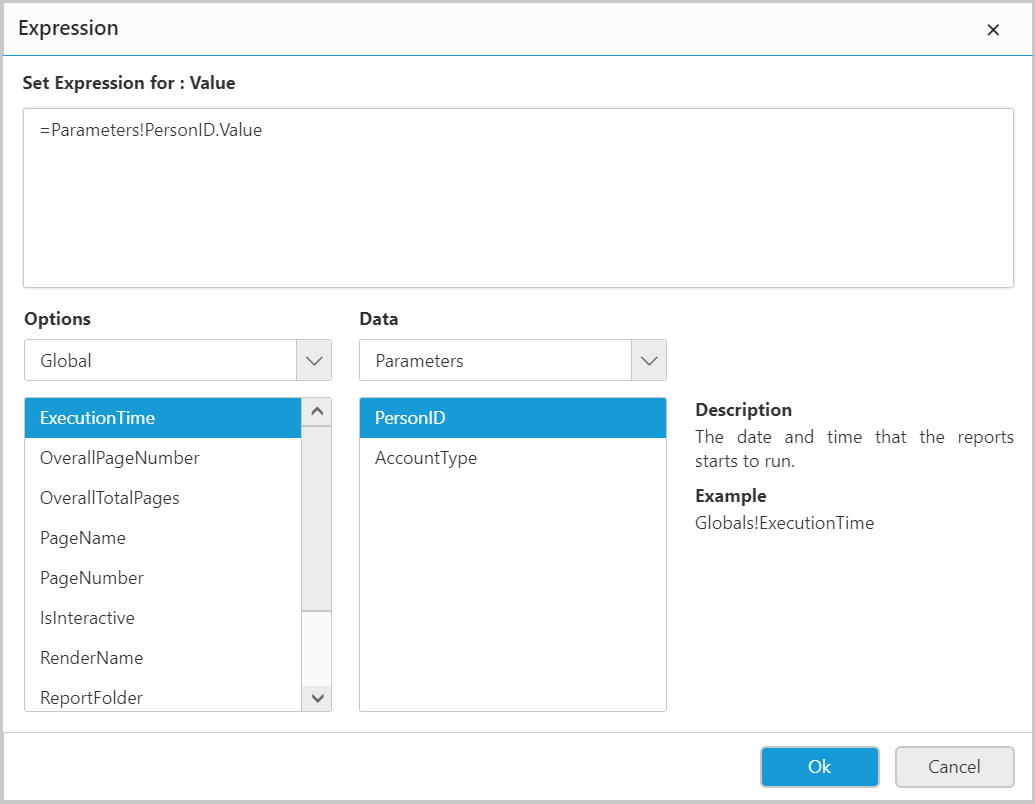
-
Click
OK.
You can follow the above steps to display parameter on the page Header and Body.